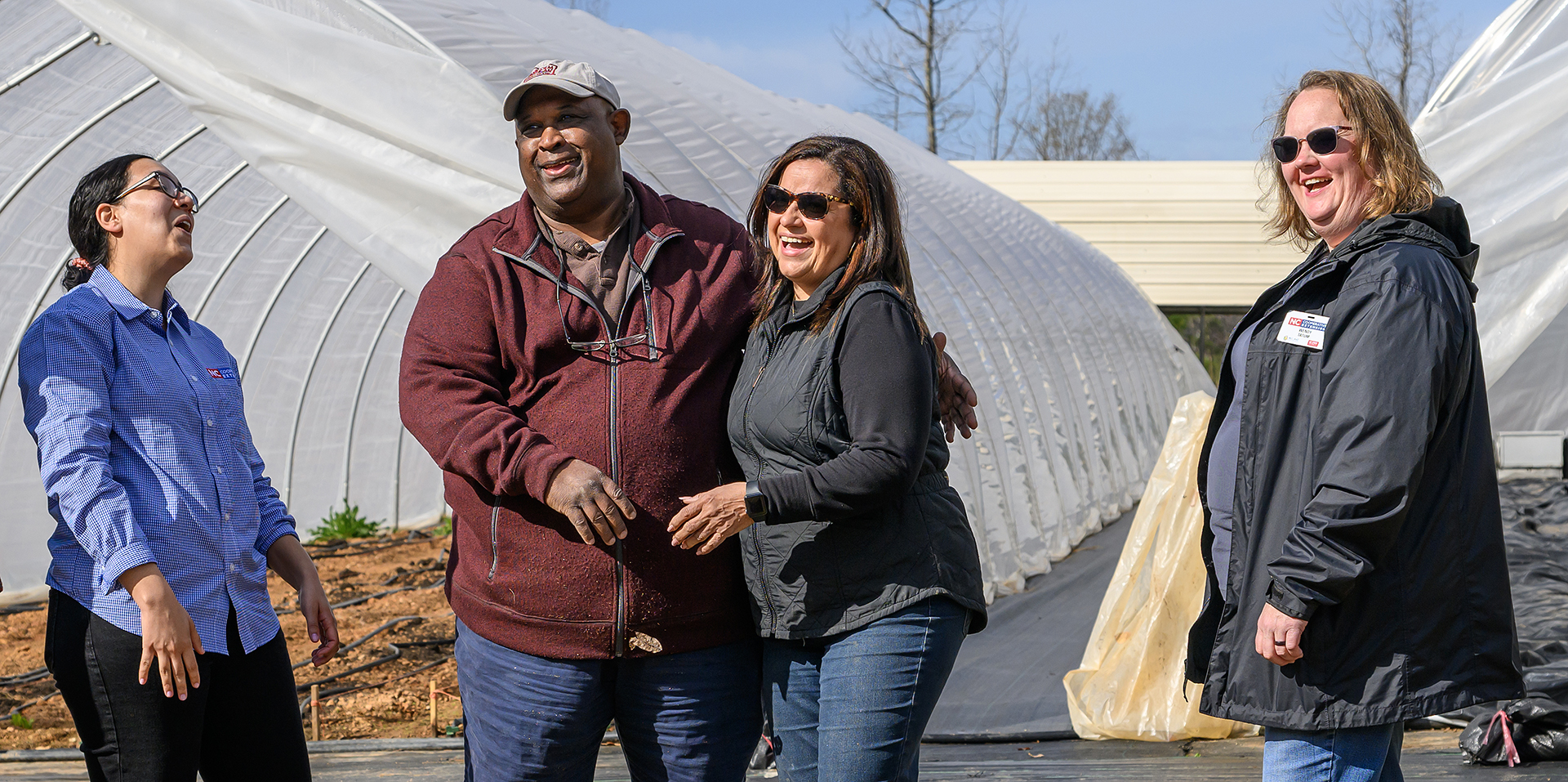Husker geoscientist’s innovative approach aims to safeguard irrigation canals – University of Nebraska–Lincoln

Report on Innovative Geophysical Methods for Sustainable Infrastructure Management
Introduction and Project Overview
An innovative, non-invasive geophysical method has been developed to enhance the maintenance and structural integrity of irrigation canals in western Nebraska. This technique, pioneered by geoscientist Mohamed Khalil, utilizes time-lapse electrical analysis to accurately identify canal seepage and settlement. The initial study focused on the Sutherland Supply Canal, managed by the Nebraska Public Power District (NPPD). This advancement directly supports the achievement of several United Nations Sustainable Development Goals (SDGs) by promoting resilient infrastructure, food security, and sustainable water management.
Methodology and Application
The analytical process involves a sophisticated time-lapse approach based on a core geophysical principle: moisture increases the electrical conductivity of the ground. The methodology was implemented as follows:
- Installation of 513 electrodes in designated test areas along the canal.
- Injection of an electrical current into the ground to measure subsurface electrical resistance.
- Collection of thousands of data points over a period of two to three hours.
- A comparative analysis was conducted using data from two distinct periods: August 2023 (canal full) and October 2023 (canal empty).
- Advanced software and computational processing were used to generate two-dimensional subsurface images, clearly highlighting seepage plumes and areas of structural concern.
Contribution to Sustainable Development Goals (SDGs)
The application of this technology provides significant contributions to global sustainability targets, with a particular emphasis on water, food, and infrastructure.
-
SDG 6: Clean Water and Sanitation
This method directly addresses Target 6.4 by improving water-use efficiency. By precisely locating and enabling the repair of canal leaks, the technology significantly reduces water loss through seepage, ensuring that this vital resource is conserved and managed sustainably for agricultural and community use.
-
SDG 2: Zero Hunger
The project supports Target 2.4 for sustainable food production systems. Reliable irrigation is fundamental to agricultural productivity. By preventing catastrophic canal failures, such as the 2019 Gering-Fort Laramie Canal collapse which led to an estimated $50 million in crop losses, this technology safeguards food security and the economic stability of farming communities.
-
SDG 9: Industry, Innovation, and Infrastructure
This work is a prime example of Target 9.1, developing quality, reliable, sustainable, and resilient infrastructure. The low-cost, accurate, and repeatable analysis allows for proactive and targeted maintenance, reducing long-term costs for utilities like NPPD and building more resilient water delivery systems essential for economic development.
-
SDG 11: Sustainable Cities and Communities
The technology’s potential application extends to monitoring the structural integrity of dams, which is critical for community safety. With approximately 3,000 dams in Nebraska, 5% of which are classified as high-hazard, this monitoring capability helps reduce the risk of disasters, such as the 2019 flooding, thereby protecting human settlements and infrastructure.
Conclusion and Future Applications
The findings, published in the Journal of Applied Geophysics, are already being utilized by NPPD for canal maintenance. The success of this project demonstrates a cost-effective and highly accurate solution for managing critical water infrastructure. The potential applications of this geophysical approach are extensive and align with numerous sustainability objectives.
- Advanced study of aquifers and groundwater contamination.
- Exploration for mineral resources.
- Analysis of subsurface structures for engineering and environmental projects.
- Support for archaeological investigations.
This innovative method represents a significant step forward in natural resource management, offering a versatile tool to build more resilient and sustainable systems for agriculture, industry, and communities across the state and beyond.
SDGs Addressed in the Article
-
SDG 2: Zero Hunger
The article emphasizes the critical role of irrigation canals in supporting agriculture in western Nebraska. It highlights how a canal failure led to a “$50 million” crop loss on “more than 50,000 acres,” directly linking water infrastructure to food production and economic stability for farmers. The new technology helps ensure a reliable water supply, which is fundamental for food security and sustainable agriculture.
-
SDG 6: Clean Water and Sanitation
The core of the article revolves around water management. The technology developed by Mohamed Khalil is designed to improve the efficiency of water use by detecting and allowing for the repair of seepage in irrigation canals. This directly addresses the need for sustainable water management and reducing water loss in the agricultural sector.
-
SDG 9: Industry, Innovation, and Infrastructure
The article showcases an “innovative, non-invasive method” to maintain and safeguard critical infrastructure—irrigation canals and dams. By providing a “low cost, accurate and repeatable” solution, the technology promotes the development of resilient and sustainable infrastructure, which is essential for economic activity, particularly in the agricultural sector.
-
SDG 11: Sustainable Cities and Communities
The technology contributes to disaster risk reduction. The article cites the “catastrophic harm” from a canal collapse and the “$3 billion in damage” from dam failures during a 2019 flood. By enabling proactive monitoring and maintenance of canals and high-hazard dams, the technology helps prevent water-related disasters, protecting communities and reducing economic losses.
Specific SDG Targets Identified
-
Target 2.4: Ensure sustainable food production systems and implement resilient agricultural practices.
The technology supports this target by making the irrigation infrastructure that agriculture depends on more resilient. By preventing canal failures like the one that devastated 50,000 acres of crops, it helps ensure the stability of food production systems. It also helps avoid “waterlogging and salinity issues,” which contributes to improving land and soil quality.
-
Target 6.4: Substantially increase water-use efficiency across all sectors.
The primary function of the described technology is to “pinpoint canal seepage.” Reducing water loss through seepage in large-scale irrigation systems is a direct method of increasing water-use efficiency in agriculture, one of the largest water-consuming sectors.
-
Target 9.1: Develop quality, reliable, sustainable and resilient infrastructure.
The article focuses on safeguarding the “structural integrity of irrigation canals” and monitoring dams. The new method enhances the reliability and resilience of this critical water infrastructure, preventing failures and ensuring it can continue to support the region’s economic health.
-
Target 11.5: Significantly reduce the number of people affected and decrease the direct economic losses caused by disasters, including water-related disasters.
The article explicitly mentions the economic losses from past infrastructure failures, including a “$50 million” crop loss from a canal collapse and “$3 billion in damage” from dam overruns. The technology serves as a tool for proactive maintenance to prevent such water-related disasters and their associated economic impacts.
Indicators for Measuring Progress
-
Volume of water saved by repairing identified seepage zones.
The article implies this indicator by focusing on the technology’s ability to “pinpoint canal seepage.” Measuring the reduction in water loss after repairs based on the analysis would directly track progress towards Target 6.4 (water-use efficiency).
-
Reduction in economic losses from water infrastructure failures.
The article explicitly states the economic cost of past failures (“$50 million” and “$3 billion”). A key indicator of the technology’s success would be a measurable decrease in such losses over time, which aligns with Target 11.5.
-
Acres of agricultural land with a secured water supply.
The 2019 canal collapse cut off water to “more than 50,000 acres.” An indicator of progress towards Target 2.4 would be the number of agricultural acres protected from water supply interruptions due to the implementation of this monitoring technology.
-
Number of critical infrastructure assets (canals, dams) monitored.
The article mentions the monitoring of the Sutherland Supply Canal and the existence of “around 3,000 dams” in Nebraska. Tracking the number or percentage of these high-hazard structures being monitored with the new technology would serve as an indicator for progress on building resilient infrastructure (Target 9.1).
Summary Table of SDGs, Targets, and Indicators
| SDGs | Targets | Indicators (Mentioned or Implied in the Article) |
|---|---|---|
| SDG 2: Zero Hunger | 2.4: Ensure sustainable food production systems and implement resilient agricultural practices. | Acres of agricultural land with secured irrigation (e.g., the “50,000 acres” mentioned). |
| SDG 6: Clean Water and Sanitation | 6.4: Substantially increase water-use efficiency across all sectors. | Reduction in water loss from pinpointed and repaired canal seepage. |
| SDG 9: Industry, Innovation, and Infrastructure | 9.1: Develop quality, reliable, sustainable and resilient infrastructure. | Number of irrigation canals and high-hazard dams monitored using the new technology. |
| SDG 11: Sustainable Cities and Communities | 11.5: Significantly reduce economic losses from disasters, including water-related disasters. | Reduction in economic losses from infrastructure failures (compared to the “$50 million” and “$3 billion” figures cited). |
Source: news.unl.edu
What is Your Reaction?
 Like
0
Like
0
 Dislike
0
Dislike
0
 Love
0
Love
0
 Funny
0
Funny
0
 Angry
0
Angry
0
 Sad
0
Sad
0
 Wow
0
Wow
0
















































:focal(1500,1000)/https://media.globalcitizen.org/a6/9a/a69a4720-d8a1-4715-b596-18738d03c05c/rotary_polio_hero_image.jpg?#)







/countries/sri-lanka/photo-credit---dmc-sri-lanka.tmb-1200v.jpg?sfvrsn=dc298bcc_1#)

















